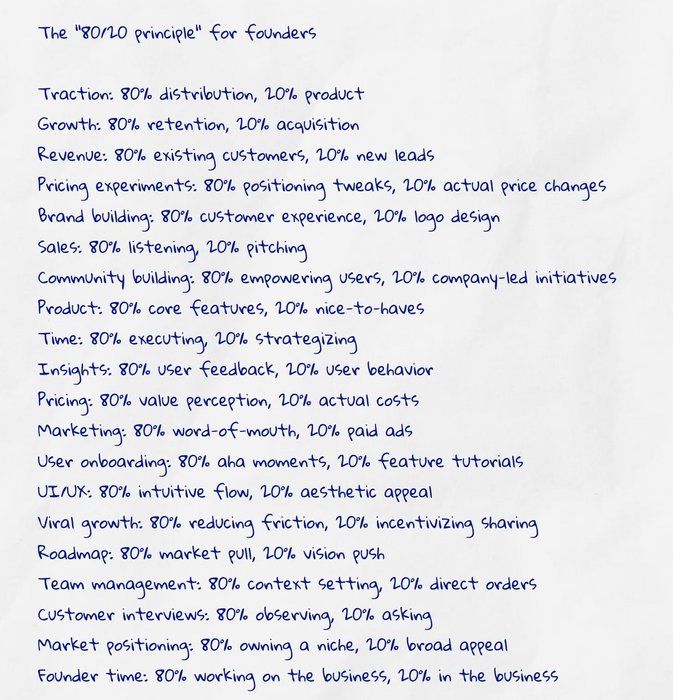
The "80/20 principle" for founders Traction: 80% distribution, 20% product Growth: 80% retention, 20% acquisition Revenue: 80% existing customers, 20% new leads Pricing experiments: 80% positioning tweaks, 20% actual price changes Brand building: 80% customer experience, 20% logo design Sales: 80% listening, 20% pitching Community building: 80% empowering users, 20% company-led initiatives Product: 80% core features, 20% nice-to-haves Time: 80% executing, 20% strategizing Insights: 80% user feedback, 20% user behavior Pricing: 80% value perception, 20% actual costs Marketing: 80% word-of-mouth, 20% paid ads User onboarding: 80% aha moments, 20% feature tutorials UI/UX: 80% intuitive flow, 20% aesthetic appeal Viral growth: 80% reducing friction, 20% incentivizing sharing Roadmap: 80% market pull, 20% vision push Team management: 80% context setting, 20% direct orders Customer interviews: 80% observing, 20% asking Market positioning: 80% owning a niche, 20% broad appeal Founder time: 80% working on the business, 20% in the business Prioritize the 80% that moves the needle. The rest is just noise.

A few things are important; most are not.
Richard Koch • The 80/20 Principle
What is the 80/20 Principle? The 80/20 Principle tells us that in any population, some things are likely to be much more important than others. A good benchmark or hypothesis is that 80 percent of results or outputs flow from 20 percent of causes, and sometimes from a much smaller proportion of powerful forces.
Richard Koch • The 80/20 Principle
But it is very rarely true that 50 percent of causes lead to 50 percent of results. The universe is predictably unbalanced. Few things really matter. Truly effective people and organizations batten on to the few powerful forces at work in their worlds and turn them to their advantage.
